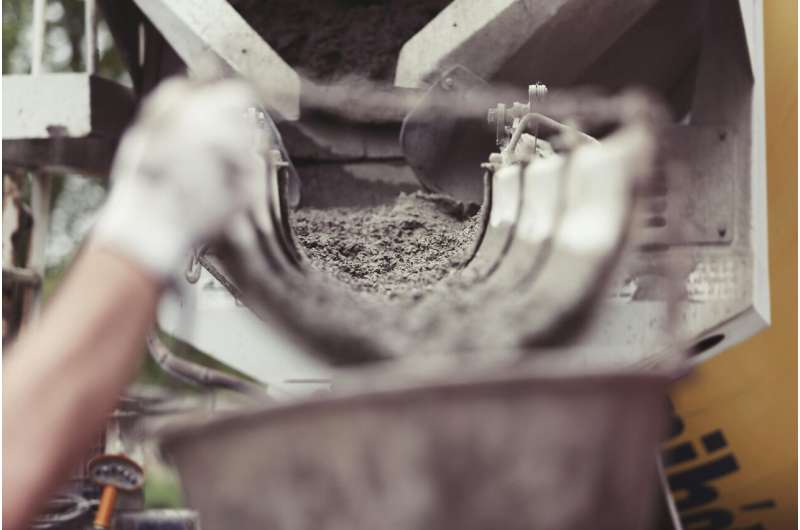
November 14, 2024 by Falko Schoklitsch, Graz University of Technology
Collected at: https://techxplore.com/news/2024-11-digital-concrete-reliable-safer-economical.html
Concreting mistakes can be expensive. Concrete poured too quickly often leads to a lack of color uniformity, irregularities in the structure and uneven surfaces. Particularly in the case of exposed concrete, expensive reworking using concrete cosmetics is then necessary; sometimes a wall may even have to be demolished.
In addition, if the fresh concrete rises too quickly in the formwork, there is a certain risk potential for the workers, as this can cause the formwork to break.
In their DigiCoPro project, Ralph Stöckl and his brother Christoph Stöckl, together with Christian Hofstadler at the Institute of Construction Management and Economics at Graz University of Technology (TU Graz), have developed a prototype of a control system for concreting processes on construction sites that uses numerous sensors and sophisticated algorithms to prevent such errors and saves resources by eliminating the need for rework.
The establishment of a TU Graz spin-off, in which the patent-pending system will be brought to market maturity, is planned for 2025.
First test with parts from the internet
“Exposed concrete is the pinnacle of concreting and any mistake here can quickly become very expensive,” explains Ralph Stöckl.
“It often happens that the concrete is poured too quickly and not compacted uniformly, meaning that the air cannot escape evenly from the concrete.”
The former head of the Institute of Construction Management and Economics, Christian Hofstadler, drew Ralph Stöckl’s attention to this topic during his doctoral thesis and explained the need for a monitoring system designed for this purpose.
Ralph Stöckl then discussed the issue with his brother and the two quickly agreed that they would like to develop such a system. They ordered the first sensors and other components online, produced a proof of concept and realized that they could measure the concrete’s climb rate.
Together with Christian Hofstadler, they registered their development as a service invention and applied—successfully—to the FFG for a spin-off fellowship.
However, developing a finished prototype from the provisionally assembled concept that could revolutionize work with exposed concrete proved longer than they thought. After all, the monitoring system should measure and analyze dozens of other parameters in addition to the rate at which concrete climbs, in order to provide a real-time warning if something goes wrong during concreting.
The prototype now also measures humidity and the temperature of the air and the concrete surface, and records sound waves to determine when the vibrator is shaking air out of the concrete and when it is not. An algorithm works in the background, inferring from the data whether everything is in order or whether intervention is required.
Algorithms for harsh working environments
The building of the prototype and the development of the algorithm were done entirely in-house. The brothers brought electrical engineer Anja Elsässer on board for the construction, including all the necessary soldering work and circuit programming.
Testing showed that the algorithm in particular had to be very carefully designed to ensure that interference factors, which inevitably occur in a harsh working environment such as a construction site, do not distort the measurement results.
After 18 months of research work, the prototype has now been fully developed and the task now is to make it market-ready. In order to raise the necessary funds, Ralph and Christoph Stöckl will focus on a second mainstay after founding their spin-off at the beginning of 2025. They will use their expertise in AI and algorithms to develop service chatbots for companies.
“The work on DigiCoPro so far has been intensive and exciting. In addition to the spin-off fellowship from the FFG, we were also lucky to receive a lot of support internally at TU Graz, as entrepreneurial ambitions are very much encouraged here,” says Christoph Stöckl.
“Now all we need to do is to obtain all the necessary certifications for our monitoring system so that we can officially offer it. We expect it to be ready by 2026.”

Leave a Reply